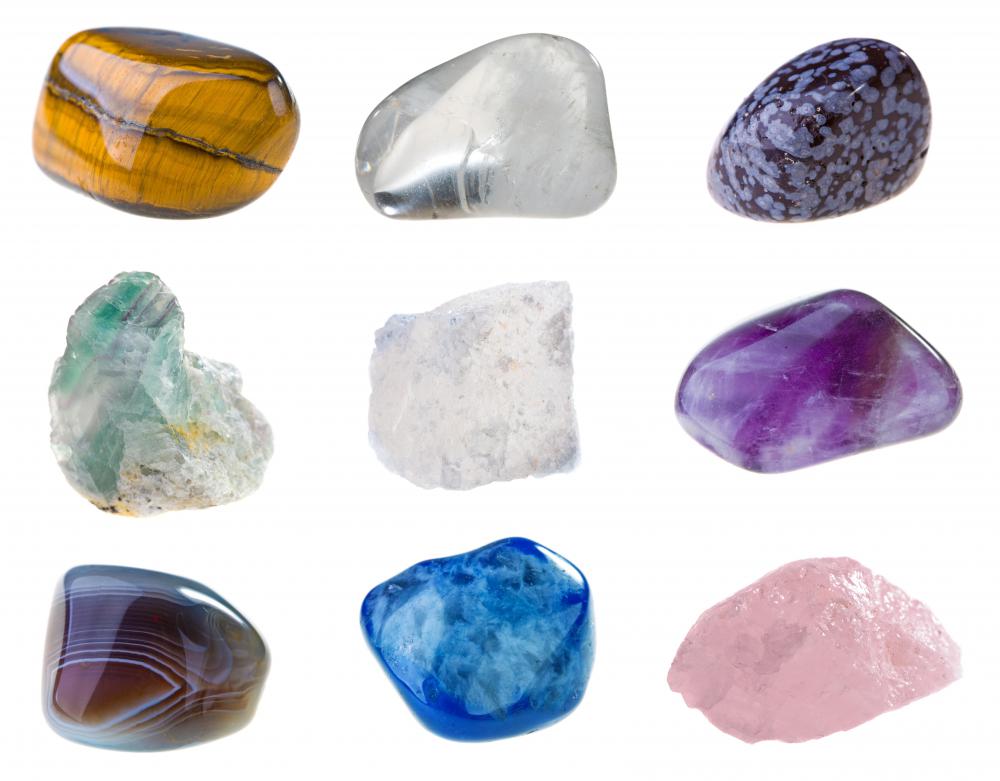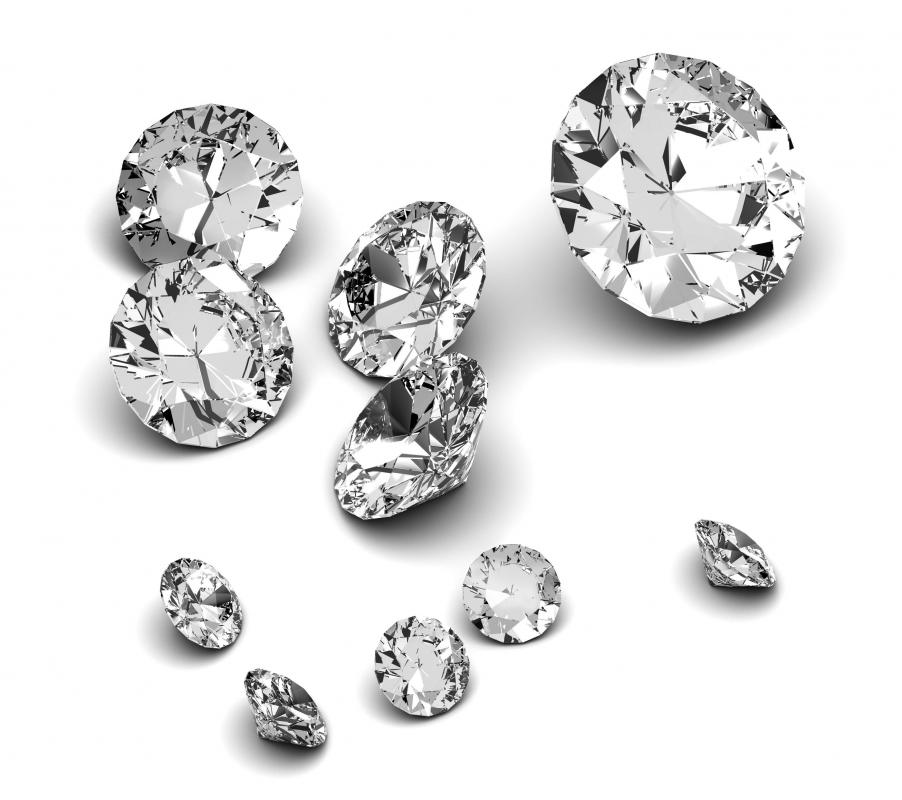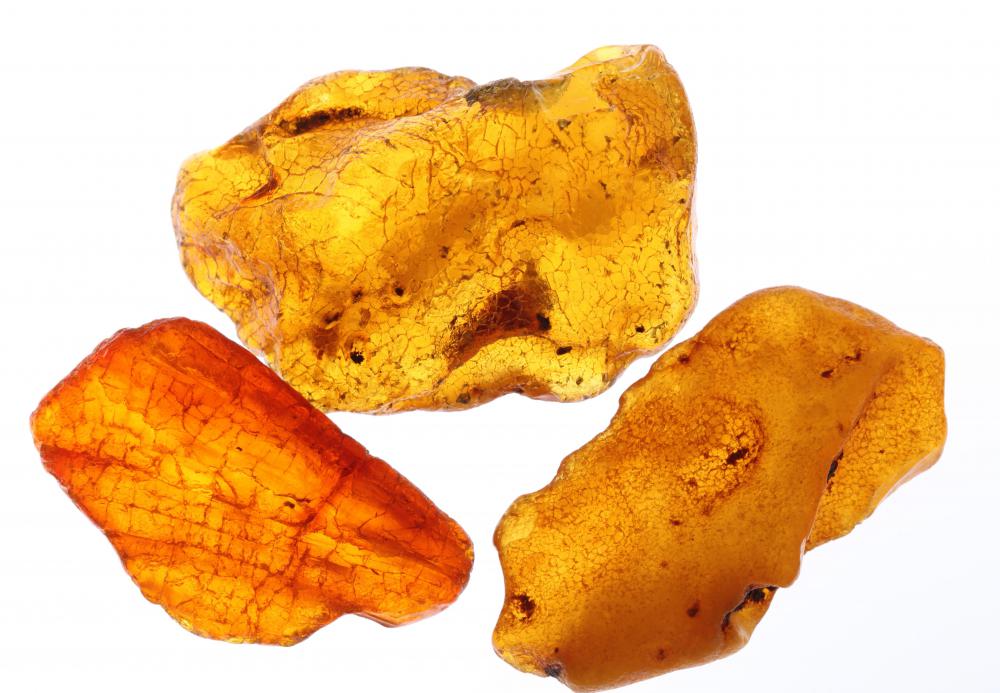At WiseGEEK, we're committed to delivering accurate, trustworthy information. Our expert-authored content is rigorously fact-checked and sourced from credible authorities. Discover how we uphold the highest standards in providing you with reliable knowledge.
What Are the Different Types of Loose Gemstones?
There are a couple of ways to categorize and organize the different types of loose gemstones. One of the first concerns how the stones are mined and removed from the earth in the first place; this can include everything from how big they are and how easy they are to identify to size and quality gradients. Once the stones are removed from the mines they must normally be processed, and from here they’re normally polished and cut into the stones commonly featured in jewelers’ shops and that are ready for placement into settings on rings, necklaces, and bracelets. These sorts of loose stones are usually designed to be as attractive as possible, and are normally valued on things like the clarity and color of the stone, the size, often known as karat, and the quality of the cut. Precious stones of high quality can become quite expensive, and perhaps as a consequence the market for synthetic and artificially enhanced stones is growing in many parts of the world. Synthetic gems often look a lot like their natural counterparts, but usually lack the quality and lasting value.
Categorizing the Stones Generally

Loose gemstones are generally precious or semi-precious stones sold loose and not set in pieces of jewelry. Sometimes loose stones are used as an investment, but many consumers and gemstone dealers obtain them in bulk at reasonable or discount prices and have them set into pieces of jewelry for later sale at a profit. Precious stones include diamonds, rubies, emeralds, and sapphires. Also included are aquamarine stones, opals, and tourmalines, to name a few.
Mining Basics

One of the most defining characteristics of gemstones of any variety is that they’ve been mined from the earth. Gems are natural features of the strata of the earth in many parts of the world. Geologists usually believe that they formed millions of years ago in the early days of the planet, when tectonic shifts were forming the continents and various ores coursed and flowed beneath the surface. These hardened to form “pipes” or seams of stone that can, under the right circumstances, be mined.

Mining is often a messy and dangerous business, and the stones that are recovered at first usually look little to nothing like what they’ll become once polished and refined. In fact, it often takes a very trained eye to recognize a raw diamond, ruby, or other stone, since they normally look dirty and rough at first. It’s only once they’ve been opened and refined that they take on their characteristic and recognizable look.
Cutting and Processing

It is typical for gems, whether loose or set, to vary in cost and value according to the classification and grade of the finished product. There are a couple of options for a raw stone once opened. It’ll need to be cut, usually as large as possible for maximum profit, and this is where it takes its shape. Cuts can be round, square, oval, or beveled. A faceted face often adds interest and can catch the light more than a flat face, though there are times when a smooth surface is also desirable. The different shapes and styles of stones at this stage are almost all factors of jewelers’ interests and value judgments.
Classification Grades

Precious stones are usually classified once they’ve been cut, usually on a numeric system. The higher the rating, the more valuable the stone in most cases. Flaws such as chips or scratches will typically depreciate the value, especially of diamonds. Gemstones are also usually graded on their chemical composition and crystal structure, as well as overall durability.
Artificial Enhancements and Synthetic Alternatives

Gemstones may be natural or synthetic. Some natural gemstones are enhanced chemically to infuse a desired color. Synthetic or man-made gemstones are chemically engineered to replicate natural gems. In most cases, the synthetic or "fake" stones may be significantly less expensive than genuine stones. Inexperienced people generally have difficulty distinguishing these, but to the trained eye the differences are usually obvious.
Common Examples and Well-Known Stones

Some of the less common loose gemstones, either genuine or man-made, are alexandrite, garnet, and topaz. A popular type of topaz is the blue topaz, which is also the birthstone for December. Many gemstones are designated as birthstones. For example, garnet is January's birthstone, amethyst is February's, and ruby is the birthstone for July.
Peridot, quartz, and kunzite may be found as loose gemstones. Types of quartz are smokey and rose quartz. Pearl, coral, and iolite are other gemstones that may be found loose, along with citrine.

Emeralds and rubies are more well known in many places. Deep-green emeralds are found naturally in regions of south Africa, including Zambia. This gemstone belongs to the mineral family known as beryl. At the opposite end of the color spectrum are red rubies. Rubies tend to be most desirable when the color is a rich, deep red, rather than a paler pinkish-red. Aluminum oxide is the mineral from which a ruby is derived from. Loose rubies are often bought and sold to set into extravagant jewelry pieces.
AS FEATURED ON:
AS FEATURED ON:



















Discuss this Article
Post your comments